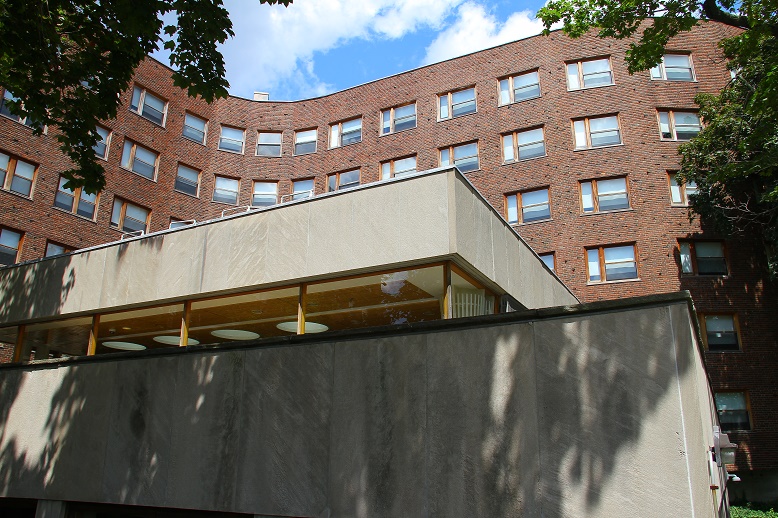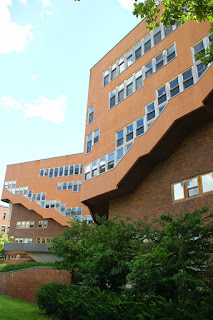Site No. 58: Library for Mount Angel Benedictine Abbey in St. Benedict, OR / USA (1964)
 |
| Train to Oregon |
Today I am presenting the site which is probably the most far away from both Alvar Aalto's and also my current home, Finland. Alvar Aalto had to come all the way to the U.S. West Coast in order to realize this building. After visiting Aalto sites in New York and Boston and
crossing the continent once again by train and a short visit to
Seattle and
Portland I finally reached Salem in Oregon. Salem Railway Station was the closest I could get by public transportation in order to reach the Mount Angel Benedictine Abbey. From the station I had to take a taxi which was the only way to reach St. Benedict in Oregon. Also I had to

stay the night as the train timetable didn't allowed me to visit the abbey just during one day. I was however lucky and the abbey itself was able to provide me with accommodation. The taxi ride had taken more than half an hour and also hadn't been cheap either. Nevertheless, I got to see the beauty of Oregon and a very friendly taxi driver took me all the way right to the abbey. He was certainly impressed when I shared with him that I had come all the way from Finland to see this, by Alvar Aalto designed, library here at the West Coast. Night was falling once we reached the abbey which was located slightly outside of St. Benedict. The abbey is nicely located on top of a hill giving a beautiful view over the surrounding area of seeming endless farmland. From the parking lot I had to climb up to the actual campus of the abbey. There on the left I spotted the library and had a first look although the light was already fading. After a good night sleep in the abbey's own guest house I spent the next morning discovering the actual library.

The dominating building of the campus was of course the church. The library was more blending in among other buildings, stood however out. Not so much because of its shape which the side facing the campus was kept rather conservative compared to the other building but because of its color. All the other buildings were of course significantly older and kept in red brick. It is interesting to consider the fact that although the library had been erected in a time that is still close to Alvar Aalto's red brick period, he decided to not choose red brick but beige instead. As I learned from the friendly lady working at the library, Aalto had quiet some difficulties fitting the building into the campus.
My impression of the building changed completely once I did a walk around it discovering the side facing the open land. Immediately typical elements of other Alvar Aalto libraries such as the one in
Rovaniemi or in
Seinäjoki came to my mind. While the front seems narrow the library opens up to the back like a leave.

The advantage of this kind of layout became even more obvious once entering the building. While the entrance is rather narrow the building opens up to the back where the shelfs with books are located. At the same time there are also large windows facing the open land letting in a lot of natural light. The shelfs are located in two floors. On the lower floor also some private working/reading rooms can be found.




There is also a seminar room right to the entrance.
Although this Aalto site had been the most far away and most difficult to reach making it necessary to stay over night and included an expensive cab ride, it definitely was worth a visit. If you are around that area don't hesitate to go and visit this place. The library is open to the public and the friendly staff is glad to answer any kind of questions you might have about the architecture. After I had spend the entire morning at the library it was again time for me to move on. A taxi took me back to Salem from where I caught the southbound Coast Starlight that took me back to Los Angeles, the starting point of my
45 day USA rail trip and my home at that time.

















































